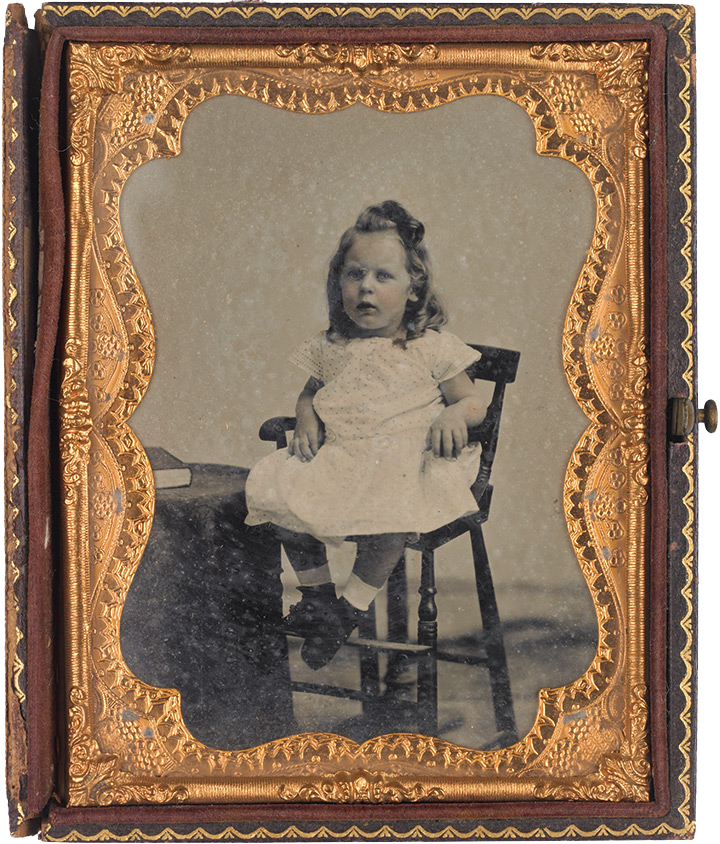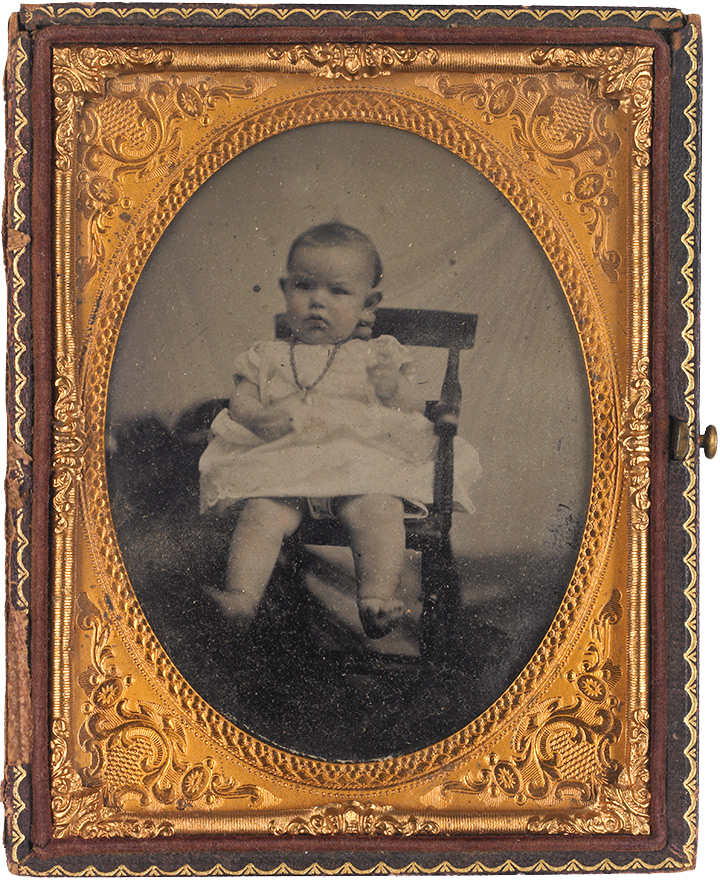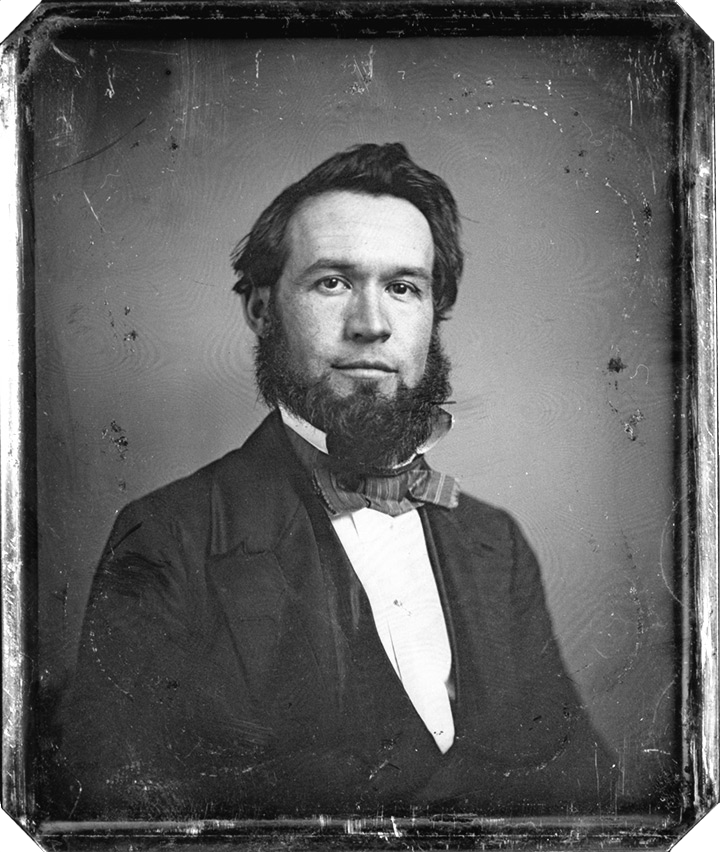
Le Bourgeois child
Photographed by Enoch Long
Born in New Hampshire, Enoch Long (1823-1898) and his brother Horatio, learned the daguerreotype process in Philadelphia and honed their photography skills throughout the country before settling in St. Louis in 1846. Quickly establishing a national reputation, Enoch’s popular downtown portrait studio continued to thrive after Horatio’s passing in 1851. During the Civil War, he produced portraits of Union Soldiers from his studio at Benton Barracks.
1/3

Le Bourgeois child #2
Photographed by Enoch Long
These examples of early photography taken by Enoch Long are thought to be portraits of the Le Bourgeois children who lived in St. Louis in the 1850s.
2/3

Daguerreotype portrait of Enoch Long, ca. 1855
Photographed by Thomas Easterly
A daguerreotype is a unique, one-of-a-kind photographic image on a highly polished, silver-plated sheet of copper. Exposure time for the earliest daguerreotypes varied from a few minutes to several minutes depending on the size of the image. It was necessary for the subject being photographed to stay as motionless as possible to avoid creating a blurry image.
Image Courtesy of the Missouri History Museum
3/3
